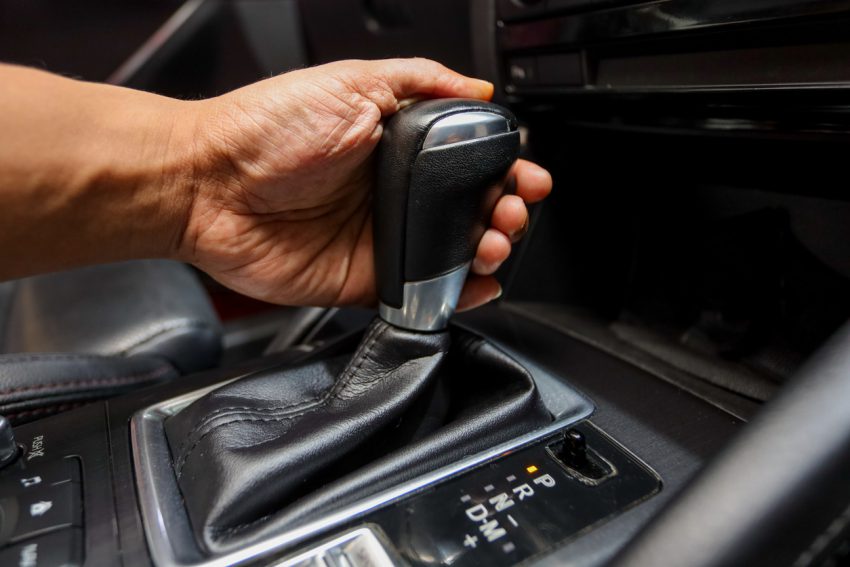
Increasing numbers of young drivers are deciding that learning to change gear in a car is a waste of time. The past 12 months has seen an 11 per cent year-on-year jump in the number of drivers qualifying with an automatic-only licence.
In 2012, there were just 550,000 drivers holding automatic-only licences. In 2021, that figure had doubled to 1.1 million.
According to a recent survey by safety charity IAM RoadSmart, around six in 10 youngsters between 17 and 24 plan to apply for an automatic-only licence.
Others think the popularity of automatic-only licences could go further, faster. Approved driving instructor Karen Bransgrove revealed: “The market for people learning to drive just an automatic has increased 10-fold over the past few years. I now have an automatic and wouldn’t teach driving a manual.”
Why an automatic-only licence makes sense
Warning: this won’t be music to the ears of driving enthusiasts. The number of cars on sale in the UK with manual gearboxes is tumbling. Latest figures (from 2021) show that nearly two thirds (62 per cent) of new cars sold in the UK were automatic. In 2000, just 15 per cent were autos. The message is clear: to have the widest choice, you need an automatic.
Part of this is to do with the popularity of electric vehicles (EVs). From 2030, no new combustion engine cars will be sold in the UK. And that means no new car will have the familiar clutch and lever combo for changing gear.

What is the difference between automatic and manual driving tests?
They are basically identical. In qualifying for an automatic licence, you can fail on things that might trip you up during a manual test. The big difference is the qualification you get. When you take an automatic-only driving test, you are only qualified to drive automatics.
When an automatic-only licence might not make sense
Weirdly, even though there’s less to do driving an auto – no pesky clutch to control – pass rates for automatic tests are lower than manuals. The current pass rate for automatic licences is around 40 per cent compared with 46 per cent for tests in cars with manual gearboxes.
If you have an automatic-only licence, you also have to be aware that you won’t have the flexibility to drive a manual car should you ever need to. This might have an impact if you ever need to rent a car for a holiday.
Equally, if you think you might need to earn a living driving, perhaps for a courier company, not having a manual licence will limit your opportunities.
How long will the manual gearbox last?
That is a very good question. As we’ve seen, sales of the automatic have already overtaken and pulled away from the manual. Mercedes-Benz has said it will begin phasing out manuals from next year. Volkswagen will also stop including manual gearboxes in its range from next year onwards. And sportscar maker Ferrari hasn’t made a manual gearbox road car since 2011.
For the car manufacturers, doing away with the manual makes production and sales sense: it’s much easier if there is only one choice for buyers. And if that option is an automatic, it allies with the way car makers engineer models these days. Car electronic safety systems work more seamlessly with automatic transmissions.
Meanwhile, charities like IAM RoadSmart think there needs to be a change in the law. Director of policy and research Neil Greig said: “We think if you pass your test in an automatic, you should legally be allowed to drive a manual, not the other way round (as it is today).”
I am not sure that allowing auto licence drivers to drive manuals is such a good idea – clutch control is not intuitive and needs practice (anyone who previously drove manuals and returns to them after time spent driving autos will recognise that you do not instantly drive as fluently as you used to).
I have a U.S. license, which means we can drive either kind of transmission. I mainly drove automatics back
home, but we had both kinds of car and I quickly got the hang of a manual. I don’t think the difference is so great that it would endanger other drivers – though you’d need a little practice in a quiet area or carpark to get the hang of the clutch. It’s not the magic knowledge U.K. people think it is because of the separate licenses here
I passed my driving test in a manual but haven’t driven one for years and neither do I want to. Why have a dog and bark yourself?
I would like to recall an incident related to the above. I recently helped my elderly neighbour, Sarah, switch to an automatic car due to her arthritis. It’s incredible how this change has rekindled her independence. She’s now able to visit friends, run errands, and enjoy life more freely. This shift towards automatic-only licences is truly making a difference in people’s lives, enhancing accessibility and inclusivity on the road.
I find it interesting how more folks are going for automatic-only licenses, especially with the rise of electric cars. It’s convenient, but as someone who loves manual shifting, it’s a bit sad to see that skill fading away.
It’s crucial to consider the evolving landscape of driving when choosing between automatic and manual licenses. While automatic-only licenses offer convenience, manual licenses provide flexibility and broader opportunities. Weighing the pros and cons with a reputable driving instructor, like those at Manual Driving Lessons, can help make an informed decision tailored to individual needs and aspirations.
Unfortunately those with Auto only licences are seen as a higher risk by insurance companies, so you will be forever paying higher premiums compared to someone with a full licence all other things being equal. That difference can be very significant in some cases.
This blog post hits the nail on the head! I never thought automatics would become so popular, but with most new cars being automatics, it makes total sense. Plus, learning to drive a stick shift always seemed intimidating to me. Maybe automatic-only is the way to go!
A new driver will have to but their own car eventually, that is to say, a small cheap car with a low insurance rating. These are more likely to have manual gearboxes. If one has an automatic licence, it will probably be more expensive to buy wheels. Go automatic when you can afford a more expensive car. We all start at the bottom and work up!
I got an automatic only license 3 years ago so did my wife, cousin and friend we have have never looked back as there’s no stalling no clutch control or biting point it’s just into drive and off you go much safer two hands on the wheel downside though cost of insurance is high and hard to get automatic cars but I got a Vauxhall Astra GTC in automatic and I love it I don’t see the point of stress learning in a manual when you can do it in automatic people say it’s not a full license well yes it is it’s just automatic only one I can drive on my own with no one telling me what to do